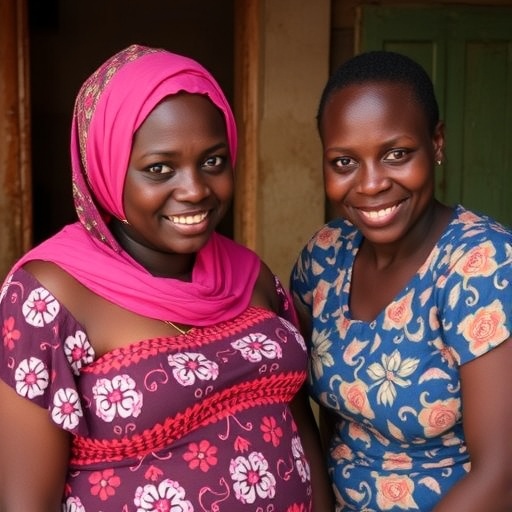In a groundbreaking study recently published in the Journal of Perinatology, researchers have brought to light profound disparities in the accessibility and delivery of prenatal neonatology consultations among populations marked by high neonatal mortality rates. This compelling investigation exposes the deep-rooted inequities that pervade prenatal care systems and highlights significant gaps that disproportionately affect vulnerable groups. As neonatal mortality remains a critical public health concern worldwide, understanding and addressing such disparities is indispensable for advancing equitable health outcomes.
Neonatology consultation during the prenatal period serves as a critical juncture in maternal and infant health management, particularly for pregnancies identified as high-risk. These consultations provide vital guidance on perinatal interventions, risk stratification, and family-centered counseling, ultimately influencing decisions that can enhance survival rates and reduce morbidity. However, the study demonstrates a troubling pattern: not all expectant mothers have equal access to this specialized care, and those from marginalized and socioeconomically disadvantaged backgrounds often face significant barriers.
The investigative team, led by Simpson, Mena, and Cortezzo, meticulously analyzed data spanning diverse demographic and geographic variables to delineate the distribution of prenatal neonatology consults. They leveraged robust statistical methodologies to adjust for confounding variables, ensuring a clear portrayal of how inequities manifest across different population clusters. What emerged was a stark portrayal of systemic disparities that are closely intertwined with socioeconomic status, race, and geographic location.
.adsslot_LnSjY8XcIa{ width:728px !important; height:90px !important; }
@media (max-width:1199px) { .adsslot_LnSjY8XcIa{ width:468px !important; height:60px !important; } }
@media (max-width:767px) { .adsslot_LnSjY8XcIa{ width:320px !important; height:50px !important; } }
ADVERTISEMENT
For example, the analysis revealed that women belonging to minority ethnic groups and those residing in rural or under-resourced urban areas were significantly less likely to receive specialist prenatal neonatology consultation compared to their counterparts in more affluent or urbanized regions. This disparity persists even after controlling for clinical indicators that would otherwise mandate consultation, suggesting an alarming disconnect between medical need and service provision.
Moreover, the researchers emphasize the role of institutional and structural determinants in perpetuating these inequities. Healthcare infrastructure deficits, such as shortages of specialized neonatologists and limited availability of prenatal diagnostic facilities, disproportionately burden hospitals serving underprivileged populations. Coupled with challenges like transportation barriers, insurance limitations, and implicit provider biases, these factors compound to restrict access to critical prenatal consultations.
Notably, the study underscores how such inequities correlate with adverse neonatal outcomes. Given that high-mortality populations are disproportionately deprived of prenatal neonatology engagement, their infants face increased risks of prematurity-related complications, birth asphyxia, and long-term neurodevelopmental impairments. This cascading effect spotlights the urgent need for targeted interventions to bridge consultation gaps and prevent avoidable neonatal deaths.
Central to the study’s narrative is the conceptualization of prenatal neonatology consultation as an equity issue rather than merely a clinical one. By framing access disparities within a social determinants of health model, the researchers advocate for systemic reforms that transcend conventional clinical pathways. They argue for the integration of culturally competent care, enhanced provider education on implicit biases, and policies that incentivize service delivery in underserved communities.
An important insight from this research is the intersectionality of inequities. The compounded effects of race, socioeconomic status, and geography do not operate in isolation but synergistically magnify the risk of inadequate prenatal care. Addressing this necessitates a multidisciplinary approach that includes clinical innovation, public health policy intervention, and community engagement.
Furthermore, the study calls attention to the essential role of data transparency and continuous monitoring. Only by systematically collecting and analyzing consultation utilization metrics across diverse demographics can health systems identify gaps and track progress toward equity goals. The authors advocate for standardization in reporting prenatal neonatology consultation rates embedded in neonatal quality improvement initiatives nationally.
Beyond systemic reforms, this research has implications for clinical practice and provider behavior. Increasing awareness among obstetricians and referring clinicians regarding equitable referral patterns can mitigate unconscious disparities. Institutional protocols designed to standardize consultation triggers irrespective of patient background may serve as effective tools for promoting fairness.
The authors also highlight challenges in addressing mistrust and cultural barriers that may deter certain populations from pursuing specialist consultations. Tailored communication strategies, patient education, and the inclusion of culturally aligned care teams are vital to improving engagement and adherence to recommended prenatal pathways.
Importantly, the findings resonate in a broader context of persistent health disparities that plague maternal and neonatal healthcare alike. Neonatal mortality is frequently intertwined with prenatal maternal health inequities, emphasizing the necessity for integrated strategies targeting the prenatal-to-postnatal continuum.
In conclusion, the research by Simpson and colleagues acts as a clarion call to the medical community and health authorities. It compels acknowledgment of the systemic inequities that compromise prenatal neonatology consultation access and heighten neonatal mortality risks. Addressing these disparities requires concerted efforts grounded in equity-focused policies, innovative care models, and commitment to social justice in healthcare delivery.
As neonatal survival continues to be a global priority, this study marks a pivotal step towards illuminating hidden gaps and inspiring transformational action. The convergence of clinical insight and equity advocacy presented herein offers a potent framework for reshaping prenatal care landscapes and ensuring that high-risk neonates universally benefit from specialized consultation services that can change lives.
Subject of Research: Inequities in prenatal neonatology consultation access among high-mortality neonatal populations
Article Title: Inequities in prenatal neonatology consultation in high-mortality neonatal populations
Article References:
Simpson, S.L., Mena, K., Cortezzo, D.E. et al. Inequities in prenatal neonatology consultation in high-mortality neonatal populations.
J Perinatol (2025). https://doi.org/10.1038/s41372-025-02377-z
DOI: https://doi.org/10.1038/s41372-025-02377-z
Tags: access to maternal health careequity in prenatal carefamily-centered counseling in neonatologyhigh-risk pregnancies managementmaternal and infant health outcomesneonatal mortality disparitiesperinatal interventions guidanceprenatal neonatology consultationspublic health concerns in neonatologysocio-economic barriers in healthstatistical analysis in health researchvulnerable populations in healthcare





